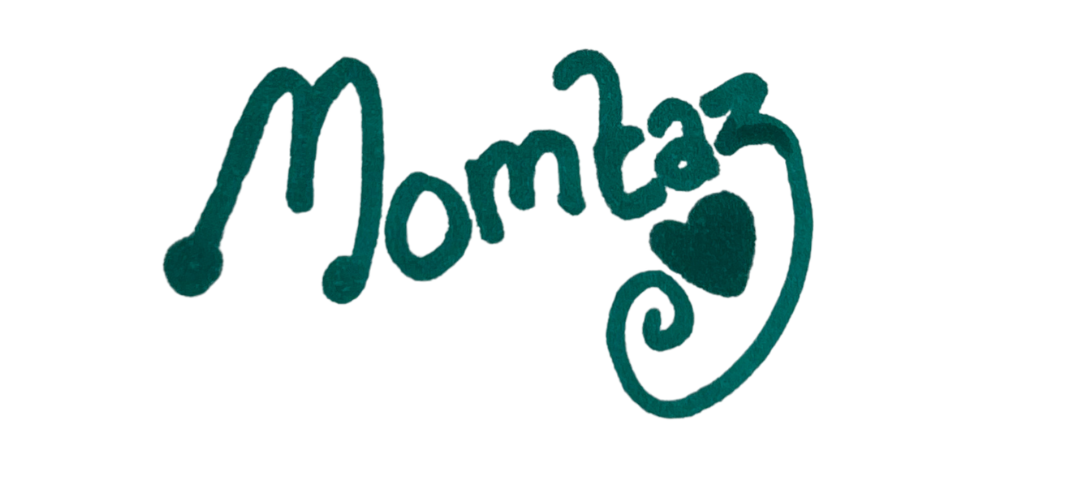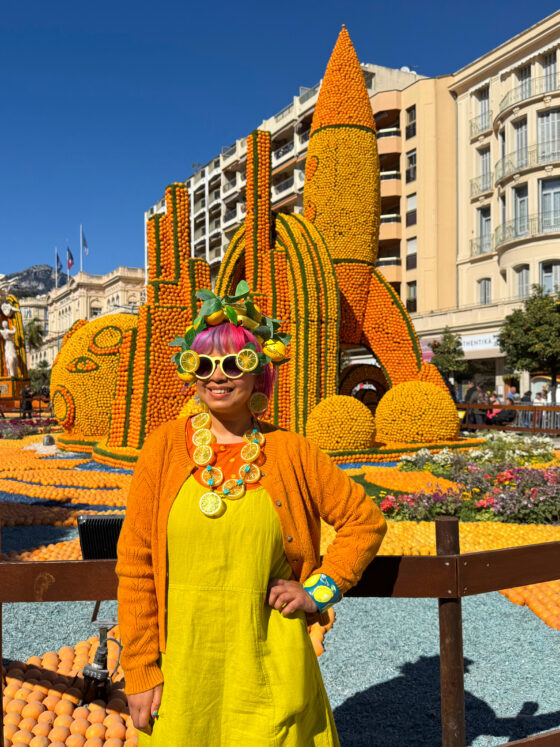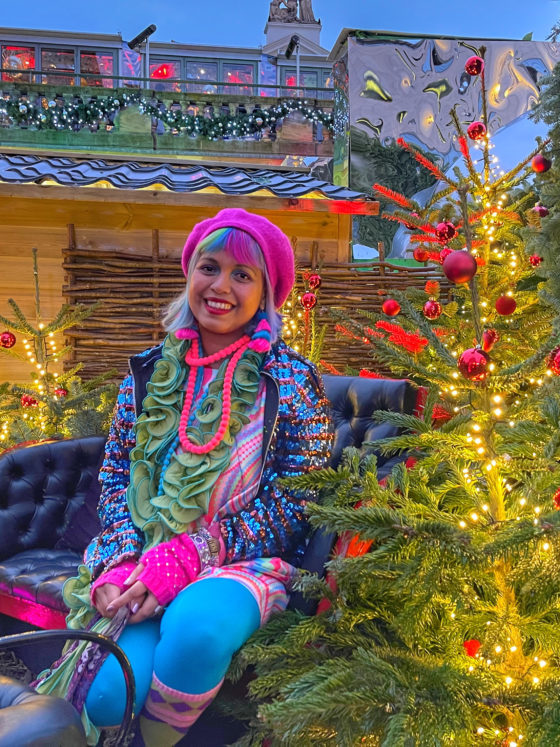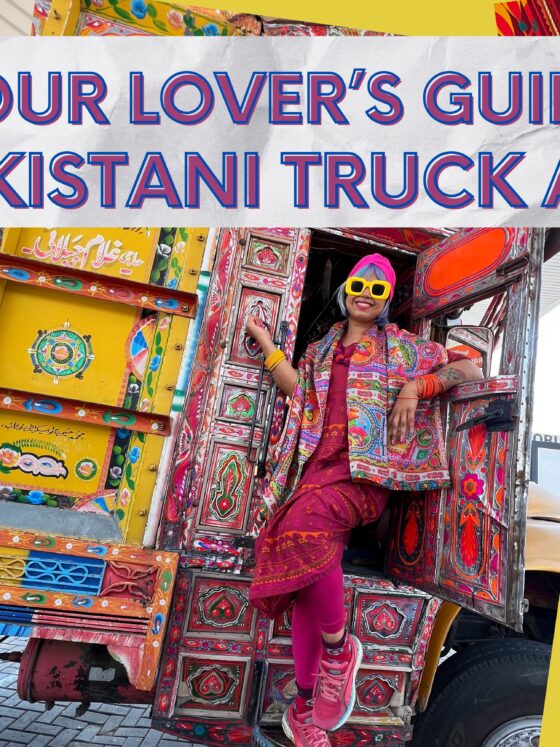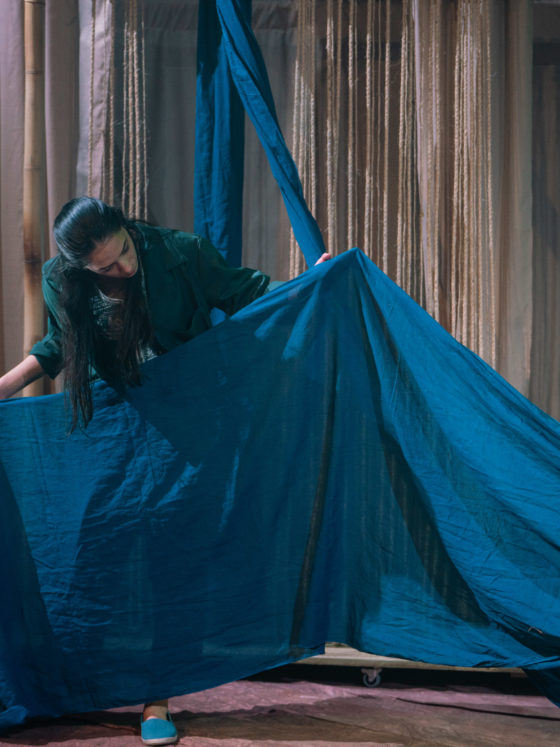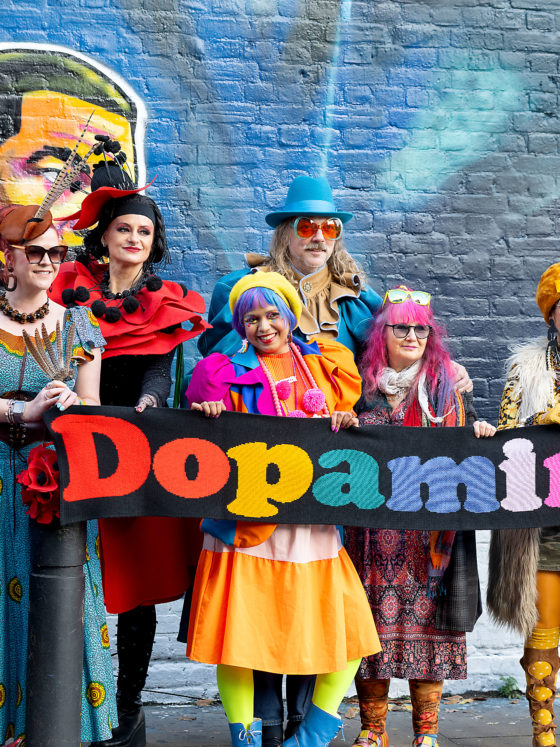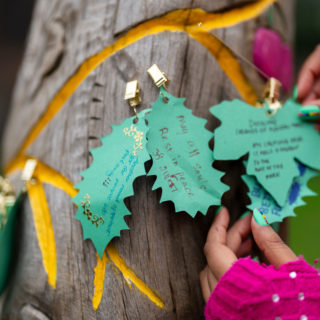The Most Colourful Exhibitions at Venice Biennale 2024 – Foreigners Everywhere
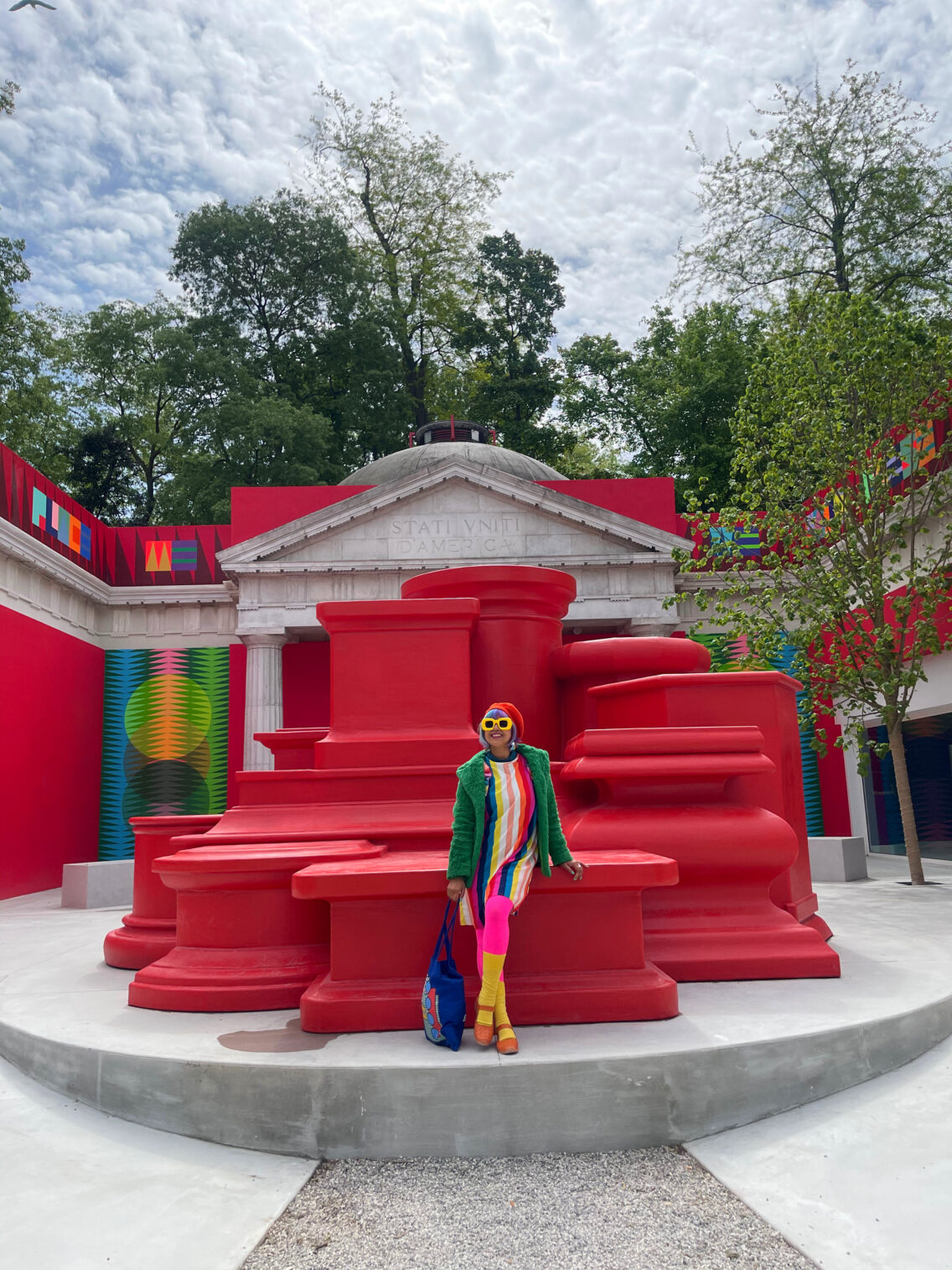
Colour, craft and folk art in abundance are at the 60th Venice Biennale where the theme is ‘Foreigners Everywhere.’
If you’re an art lover the Venice Biennale also known as La Biennale di Venezia is an essential visit. It’s the chance to see some of the best art in the world, in one of the world’s most beautiful cities.
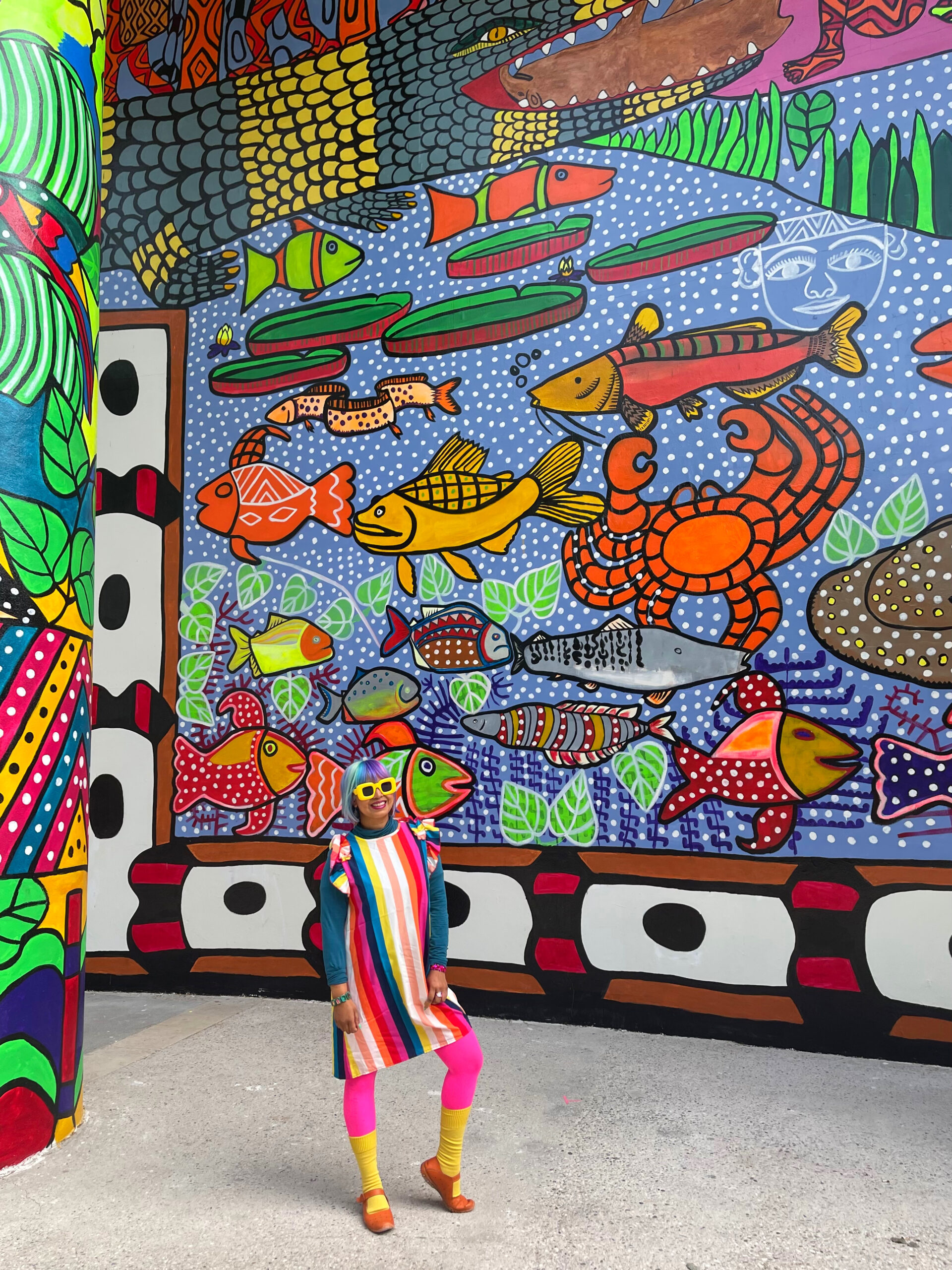
A gigantic art exhibition extravaganza, some of them are free to visit and some require a ticket which gives you access to all the main exhibition areas. We’re taking 100s of exhibitions in every corner of the watery city and there’s eight months to view them.
What drew me to visiting it was seeking out the colour. So, for this post, I’ve compiled my must-visit list of the most colourful exhibitions to check out at Venice Biennale 2024. And for anyone new to the global art event, I’ve included everything you need to know about visiting it yourself too.
What is the Venice Biennale?

Firstly, the key thing to know is that there are two Venice Biennales held on alternate years. They switch between contemporary art and architecture and for 2024 it’s art. But what kind of art I hear you ask?
Well the Biennale is known as the Art Olympics. Countries from all over the globe showcase their best contemporary artists and there are several award-winners – check out who won for 2024. This year 331 artists have work on display. By art, we’re talking about every discipline imaginable; from fine art to textiles, sculpture, film, audio, dance and even sensory installations based around scent.
What is at the Venice Biennale?
There are three main aspects to the Biennale:
1. Biennale Arte main central pavilion – Foreigners Everywhere exhibition

Each year a guest curator is chosen to curate an exhibition featuring artists responding to their chosen theme. For 2024, it’s Adriano Pedrosa, the first ever South American curator who is the curator of the Sao Paulo Museum of Art in Brazil. He’s chosen the theme ‘Foreigners Everywhere.’
He is also focussing on artists from countries in the global South prioritising indigenous artists and those that consider themselves foreigners, immigrants, exiled, diasporic or refugees.
Entry is by the main biennale ticket. The exhibition is split between two ares in Venice, one is called Giardini and one is called Arsenal. They’re both in walking distance of each other.
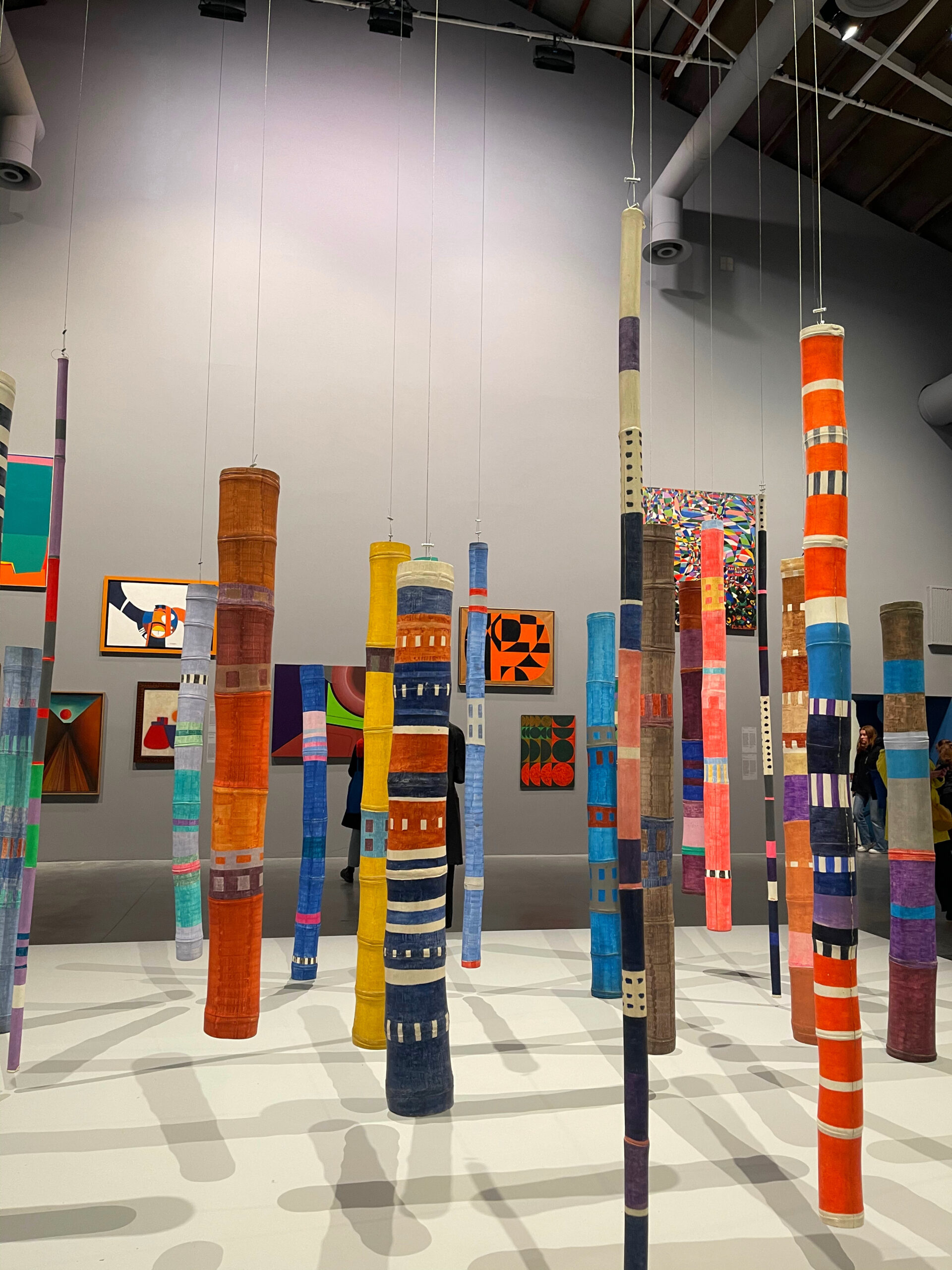
2. The International Pavilions
This year there are 88 National Pavilions to visit, each one represents a different country. 2024 marks the first year of participation for Benin, Ethiopia, Tanzania, Timor Leste, Panama and Senegal.
Inside is the work of one artist or several artists representing that country. Some have their own vision and theme, or they can respond to the Foreigners Everywhere theme. The majority of pavilions require the main ticket but there are also some outside the main area around Venice, that are free.
3. Collateral events
These are fringe events taking place during the Biennale that are also related to contemporary art. This year there are 30 official ones.
Plus, there are lots of other things to check out like pop-ups. There’s such a buzz in the city that you’ll find so many other art exhibitions and events cropping up and aligning themselves with the Biennale. They’re not official but they make exploring the city even more fun.
The most colourful exhibitions at Le Biennale di Venezia 2024
I’ve based my recommendations on the main exhibition and pavilions, not the collateral or other events.
1. Central pavilion: Foreigners Everywhere
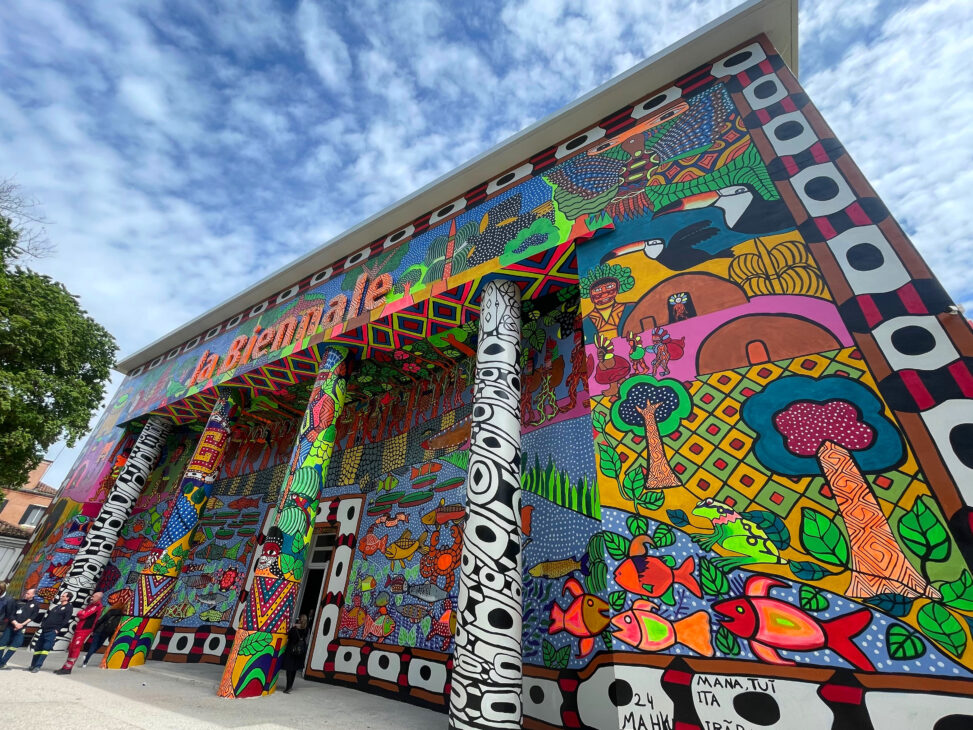
Artist: The Makhu Collective, Brazil
Vibe: The Maku are an indigenous community of around 14,000 people that live in Brazil. The art collective were tasked with covering the main Biennale building in a gigantic folk art mural. Every angle you look at it from tells a story, there are characters, motifs, patterns, pillars, animals.
2. Pavilion: United States of America
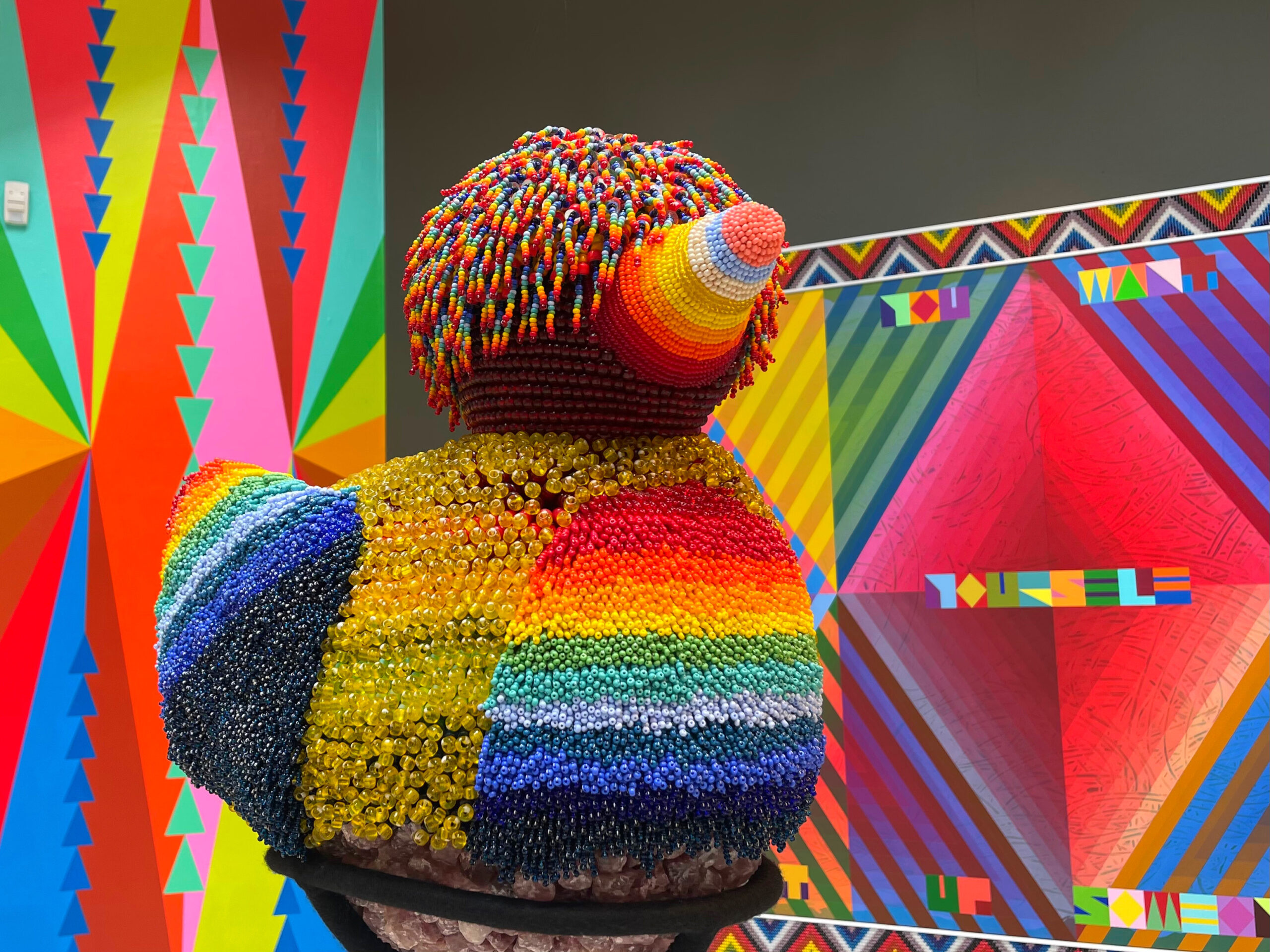
Artist: Jeffrey Gibson
Title: the space in which to place me
Vibe: Like stepping into a Jeffrey Gibson universe. He is the first artist from an indigenous background to represent the USA and his work is a kaleidoscope of paintings, words, shapes and beadwork. I’m a big fan of it, having seen a solo show of his in London and the aesthetic was the same – pure joy.

So, I couldn’t believe my luck to walk in and find that he was there! Though he was busy doing press interviews I did have a chance to say hello and get a photo taken. This pavilion was my overall favourite at the Biennale as there’s so much attention to detail from the exterior to every inch of wall space inside; and a brilliant video too.
3. Pavilion: France
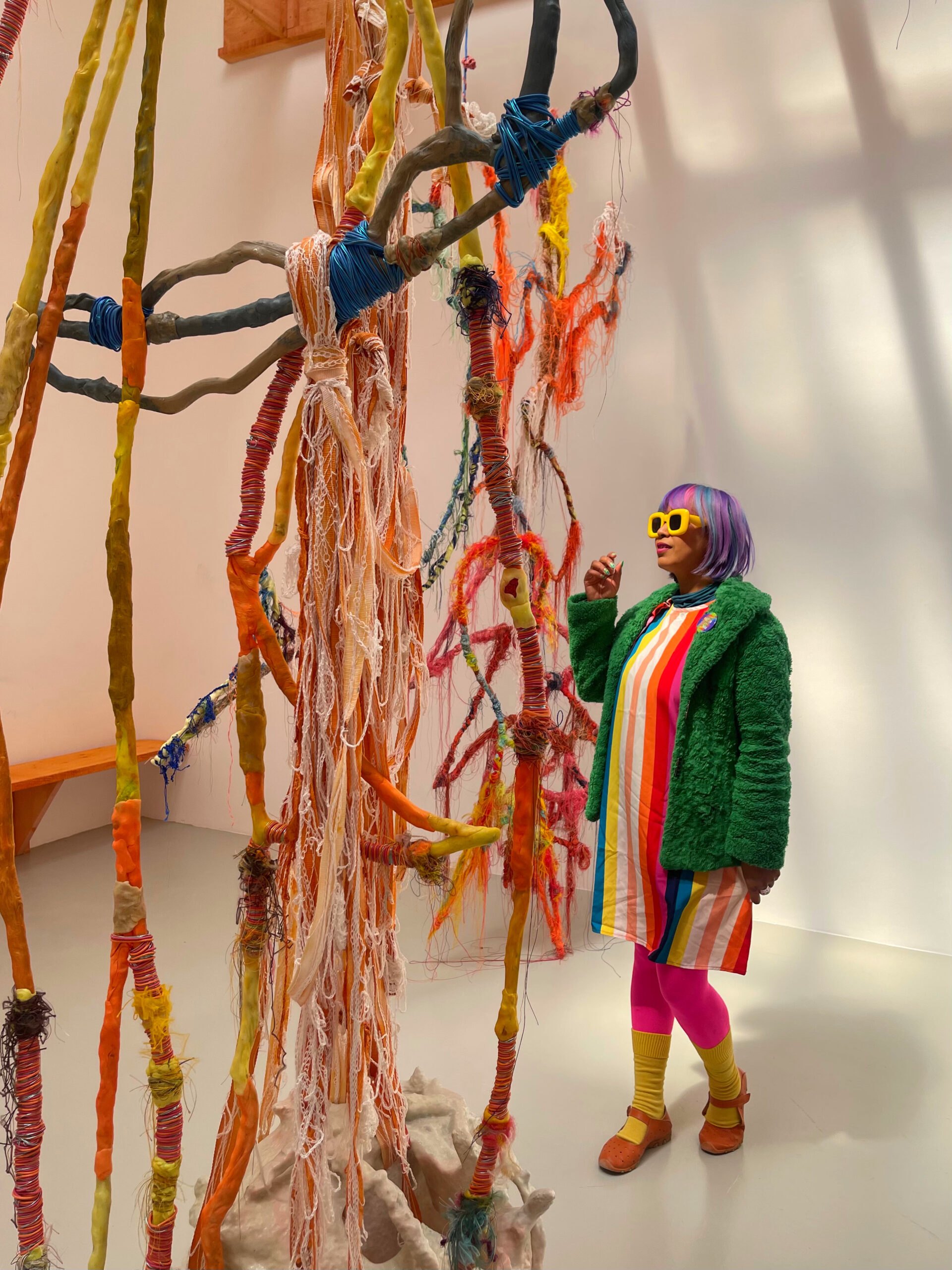
Artist: Julien Creuzet
Title: Attila
Vibe: The first black artist to represent France at the Venice Biennale with a textiles-based installation exploring French-Caribbean history. Large textile sculptures fill the rooms accompanied by poetry and a soundscape.
4. Pavilion: Hungary
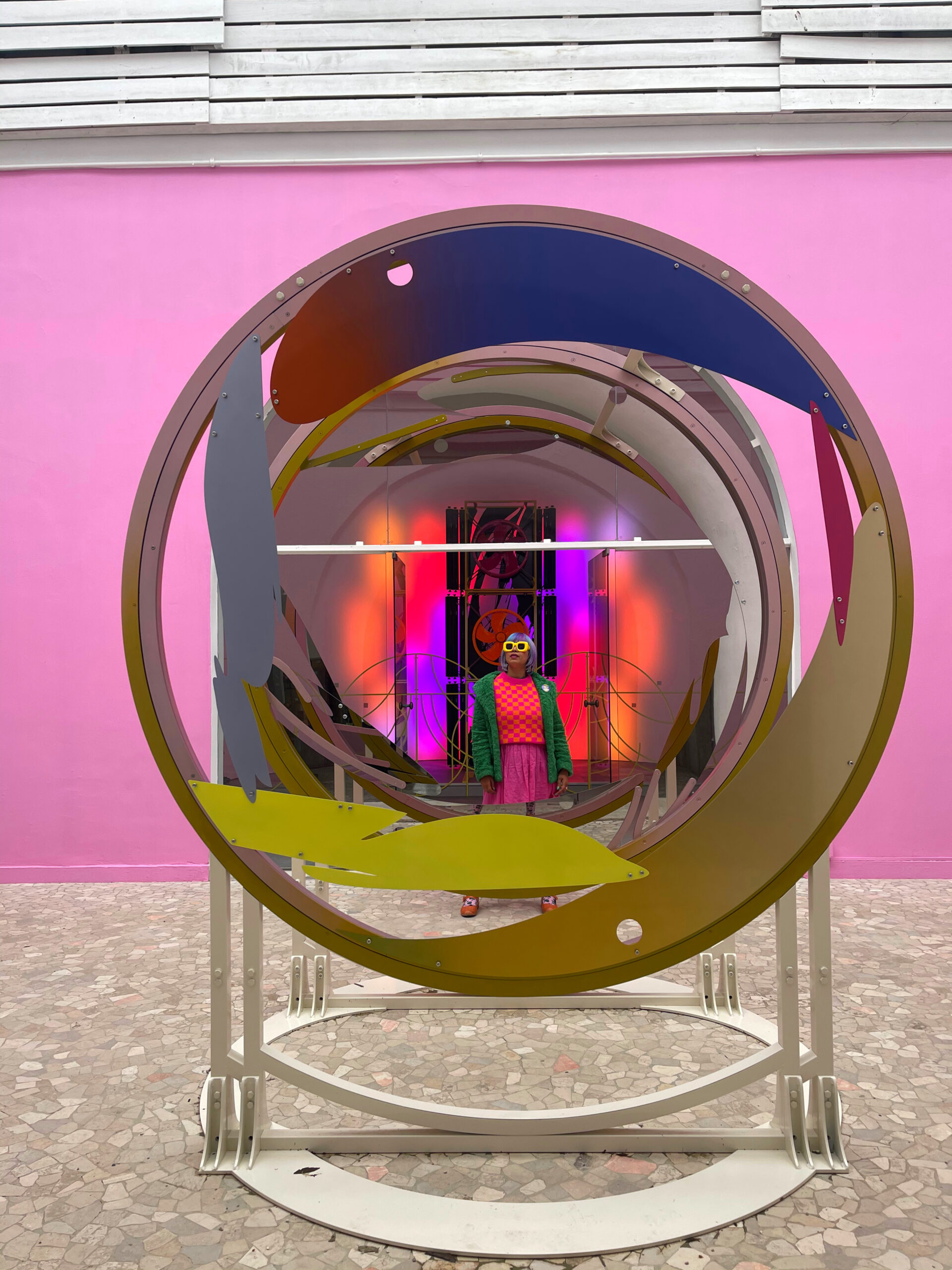
Artist: Marton Nemes
Title: Techno Zen
Vibe: A colourful immersive world where paintings combine with digital art and techno music.
5. Pavilion: Venezuela
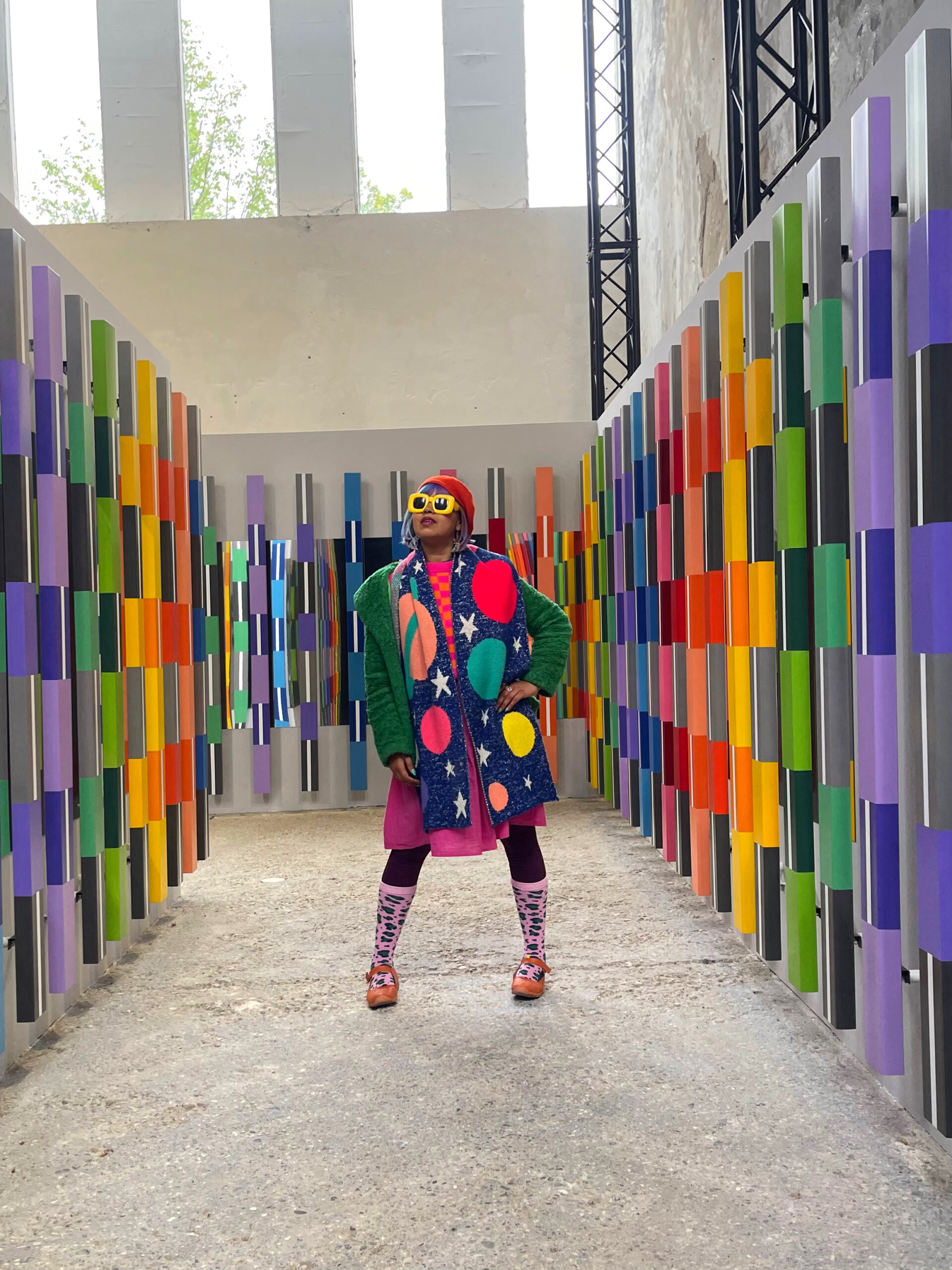
Artist: Juvenal Ravelo
Title: Environment of chromatic activation
Vibe: An exploration of light, colour and kinetic art. The artist has broken down the chromatic spectrum/rainbow, and invites visitors to see colours from different perspectives.
6. Pavilion: Azerbaijan
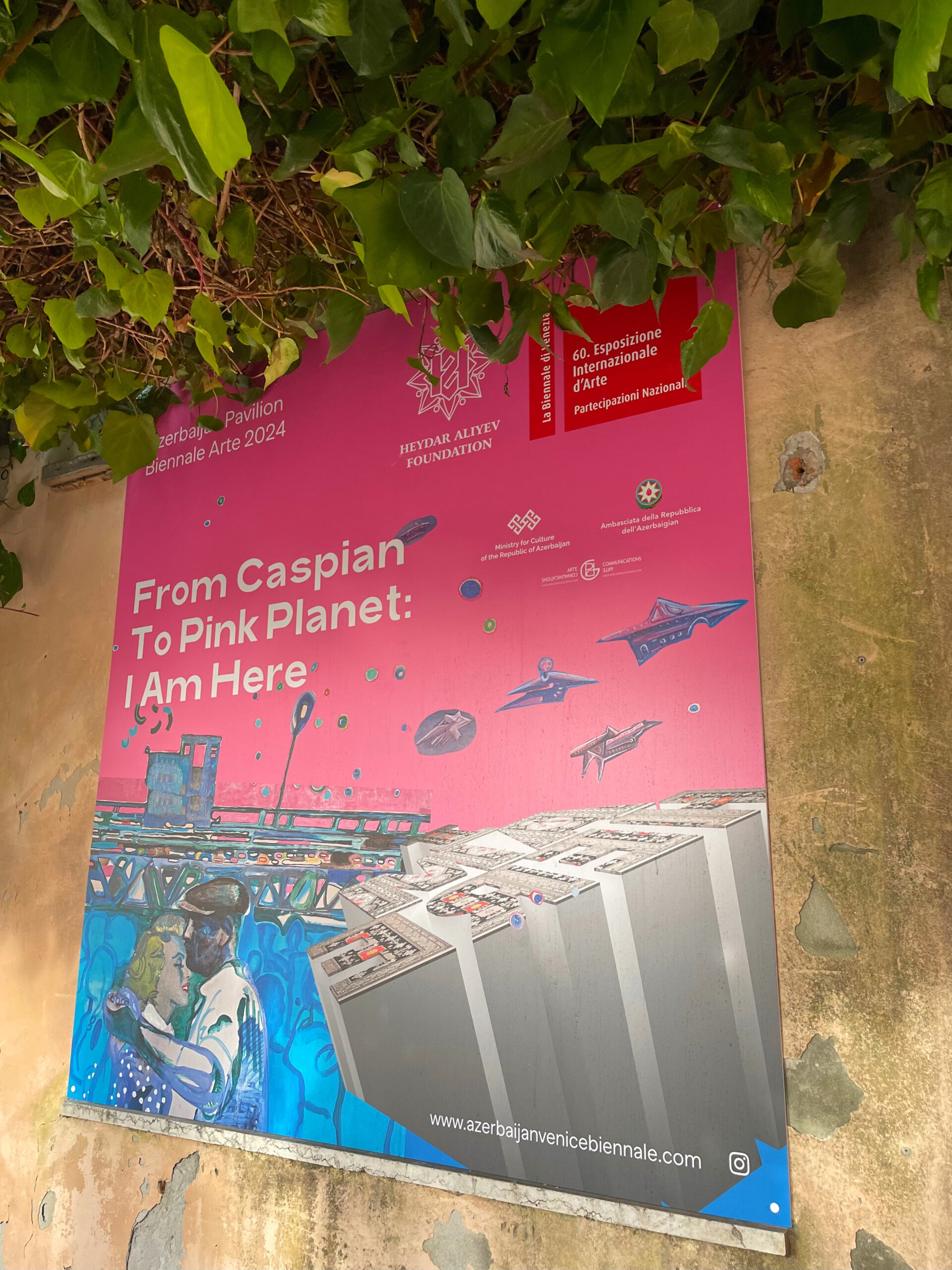
Artist: Vusala Agharaziyeva
Title: Pink Planet
Vibe: There are three exhibition by three different artists, all of which I enjoyed. One is a series of paintings about a fictional friendship, one is a maze and the other an entirely pink room called the pink planet. It features physical and digital artworks.
7. Pavilion: Benin
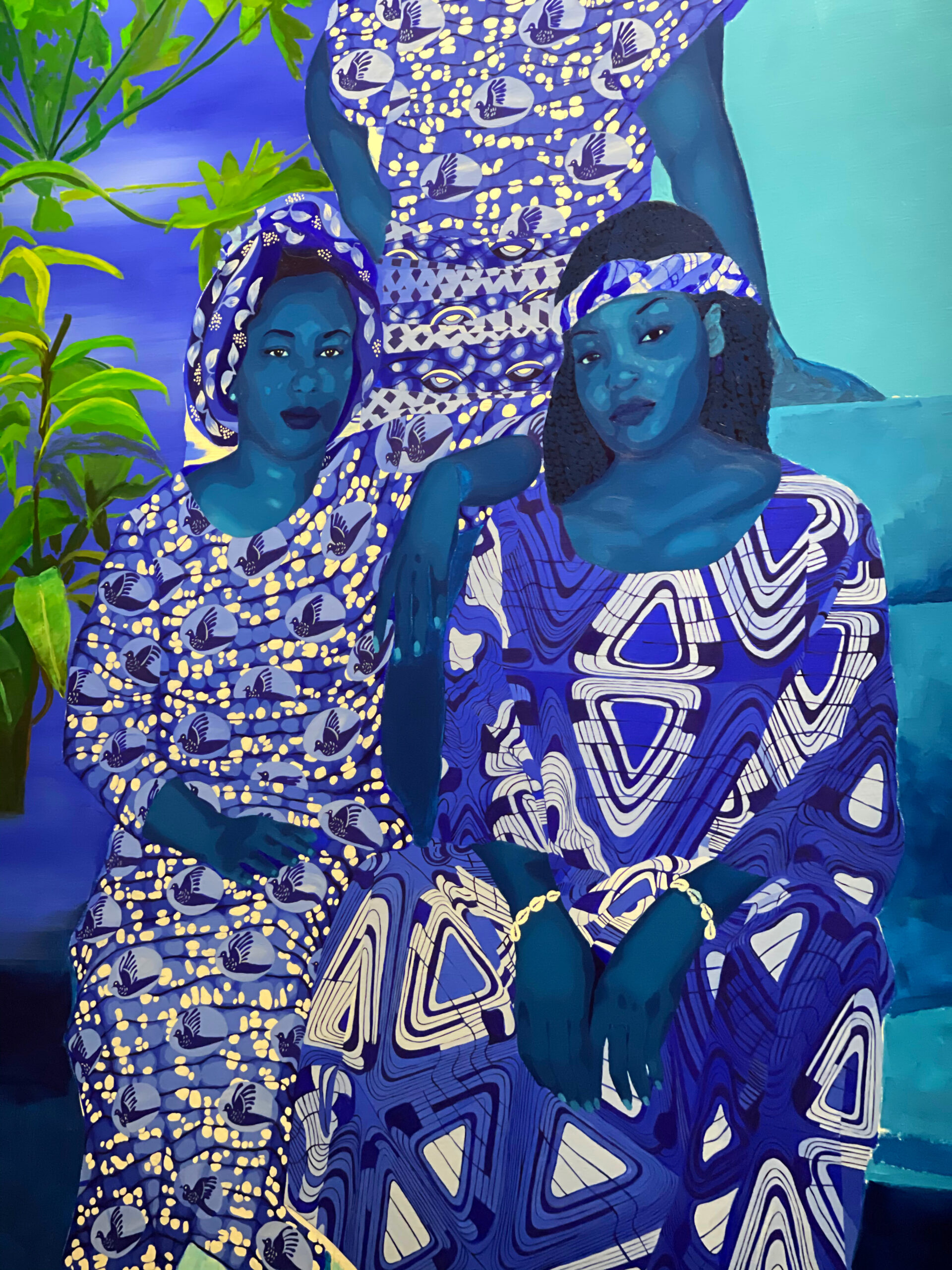
Artist: Chloé Quenum
Title: Everything precious is fragile
Vibe: Beautiful blue potraits exploring a matriarchal way of life.
Other pavilions I enjoyed because of their colours include Canada, a pavilion that’s completely covered in beads and the Scandinavian pavilion which features embellished kimonos.
8. Special pavilion: Applied Arts in collaboration with the V&A Museum, London
Artist: Beatriz Milhazes
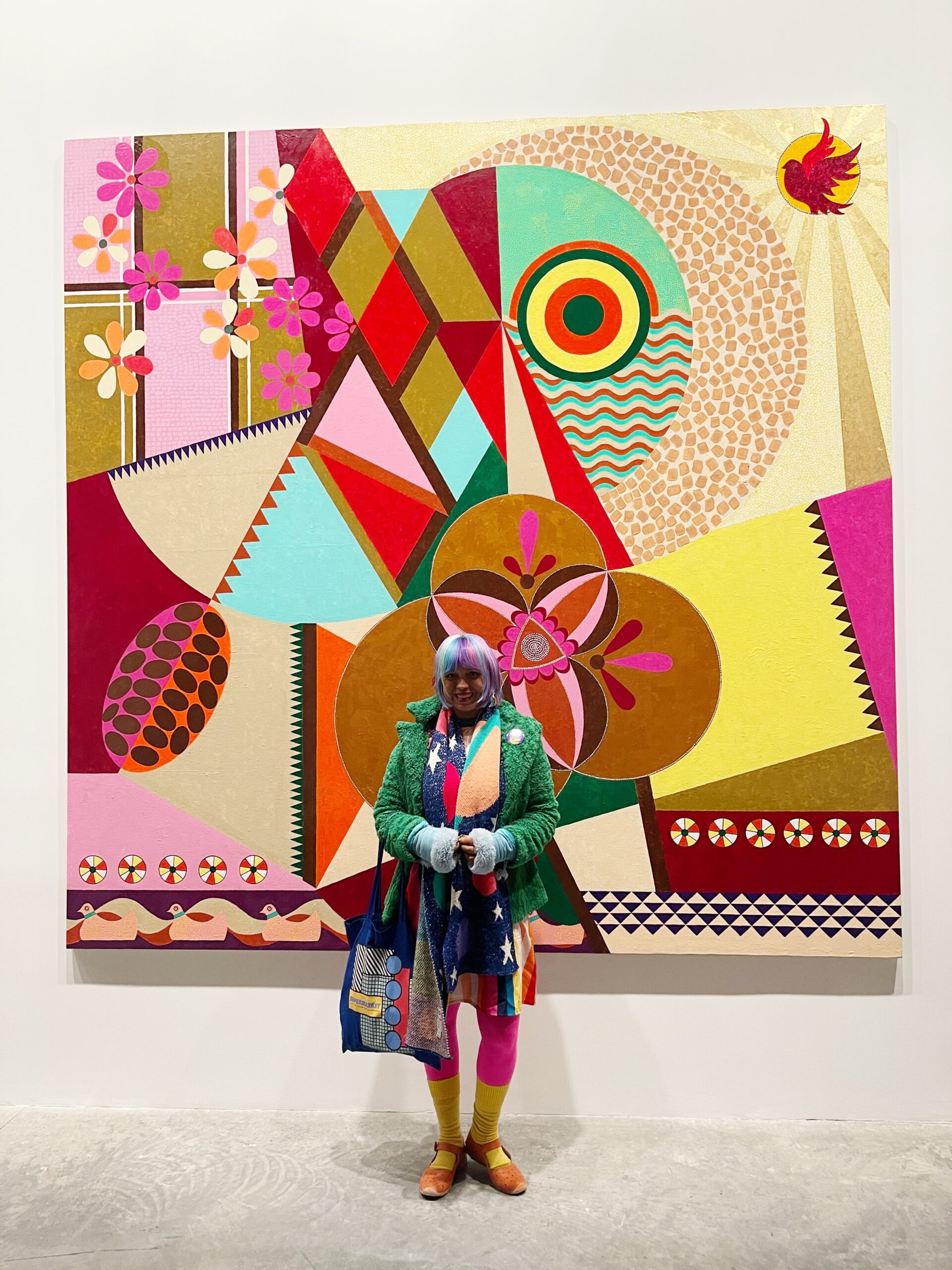
A Brazilian artist that explores colour, painting, crafts, collage and cultural techniques. Her large-scale pieces are inspired by textiles picked up on her travels, and some from the V&A Museum’s archives.
What is the theme Foreigners Everywhere about?

The provocative nature of this year’s title has been causing a stir in the art world with critics confused. Prominent figures like artist Anish Kapoor claim it evokes neo-fascism and promotes the Italian government right-wing views. But on the other hand, its reclaims the phrase from the fascists putting a positive spin on it. Curator Adriano Pedrosa explained the meaning in an interview with The Art Newspaper: ‘One could say that wherever you are, wherever you go, there are always foreigners around you, but also on the other hand that wherever you go, you are always, deep down, a foreigner yourself.’
The phrase has been used by artist Claire Fontaine who has been using it since 2004 to create neon sculptures of the phrase in different languages which you can see on display at the Biennale.
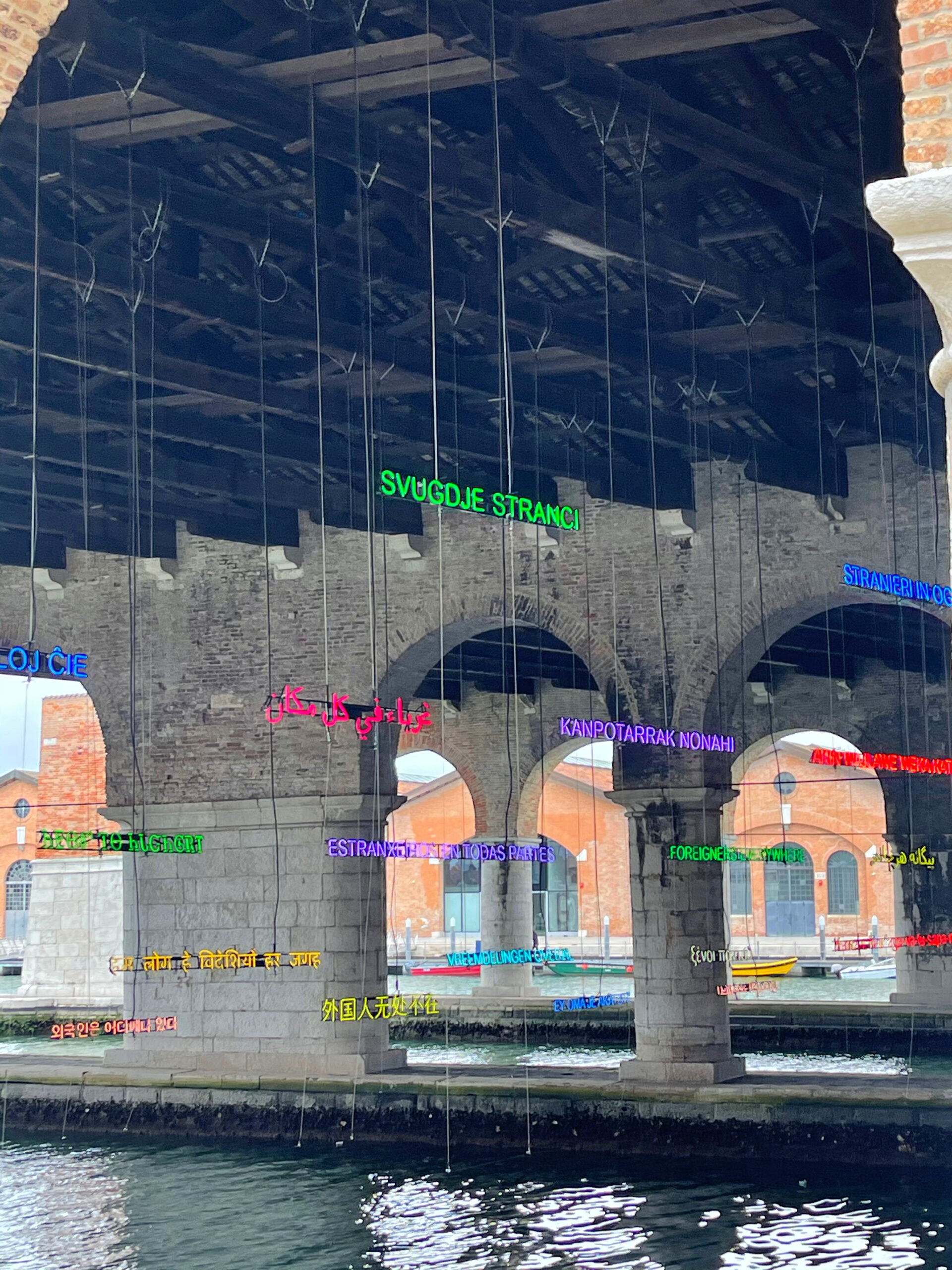
Personally, I like the title, I like the neon art and can relate to Adriano’s view. I love that there are foreigners everywhere and feeling like a foreigner is something I’ve experienced throughout my life.
There has long been inequalities in the art world when it comes to how craft is viewed. This is finally craft and culture getting its moment
Some critics believe it’s a disappointing year for the Biennale as there’s not enough high art – instead there’s a lot of craft techniques, traditional handicrafts and folk art. All of those things are my jam, but without that bias, I really like that for the 60th year the Biennale challenges what art is. Art isn’t just about fine art painters – why can’t a naive sketch be considered worthy enough to be hung in a gallery? How is that an embroidery can take months to complete but is valued less than a painting?
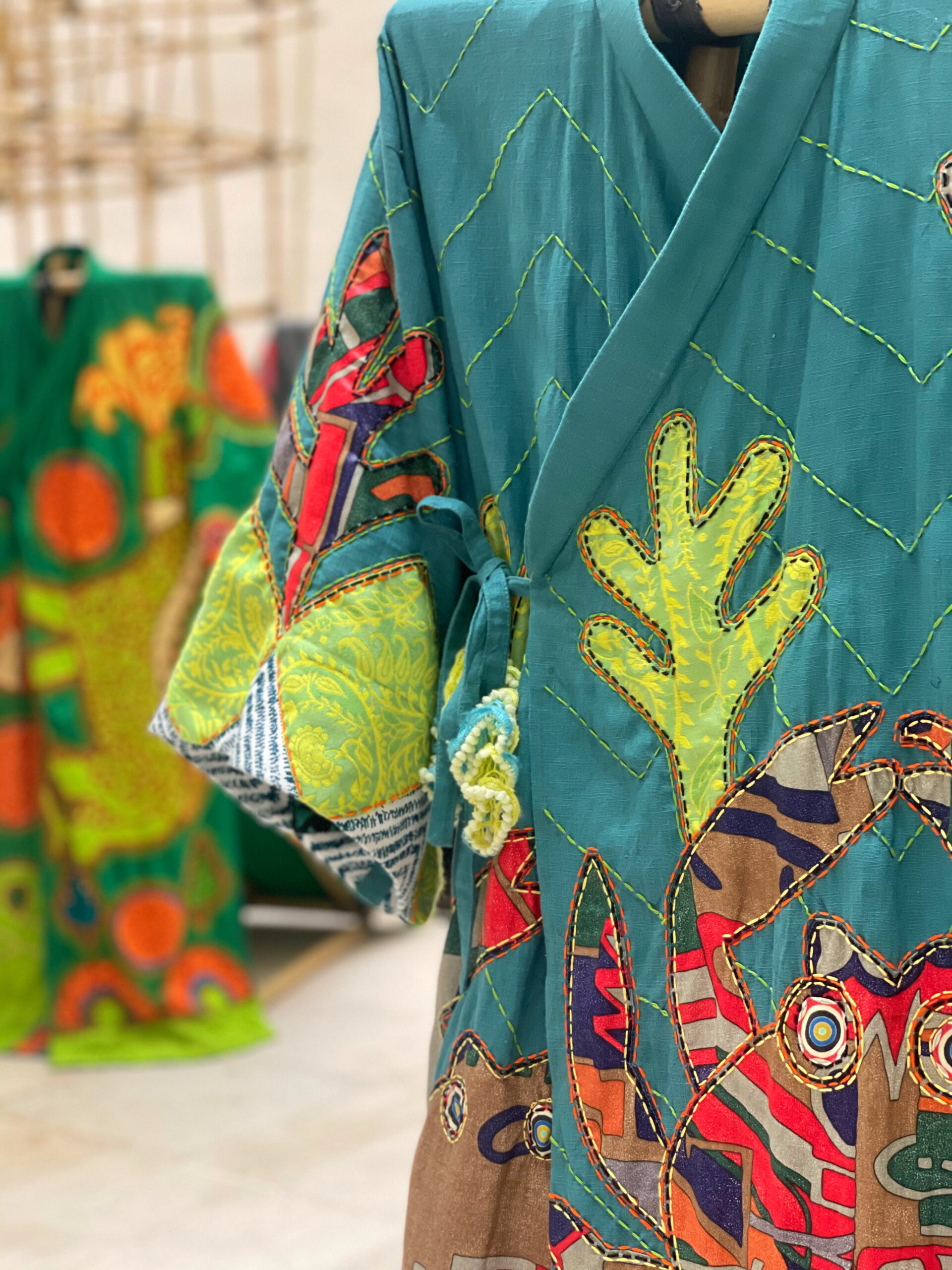
There’s long been inequalities in the art world when it comes to how craft is viewed. This is finally craft and culture getting its moment.
The most disappointing part of my visit was not being able to get a Foreigners Everywhere t-shirt. I attended on the second day of the festival and was told they only had limited stock so there wasn’t one in my size. I’d have worn it with pride. If you’re at the Biennale do check out the main shop based in Arsenale to pick up some other merchandise and books.
Can anyone visit the Venice Biennale?
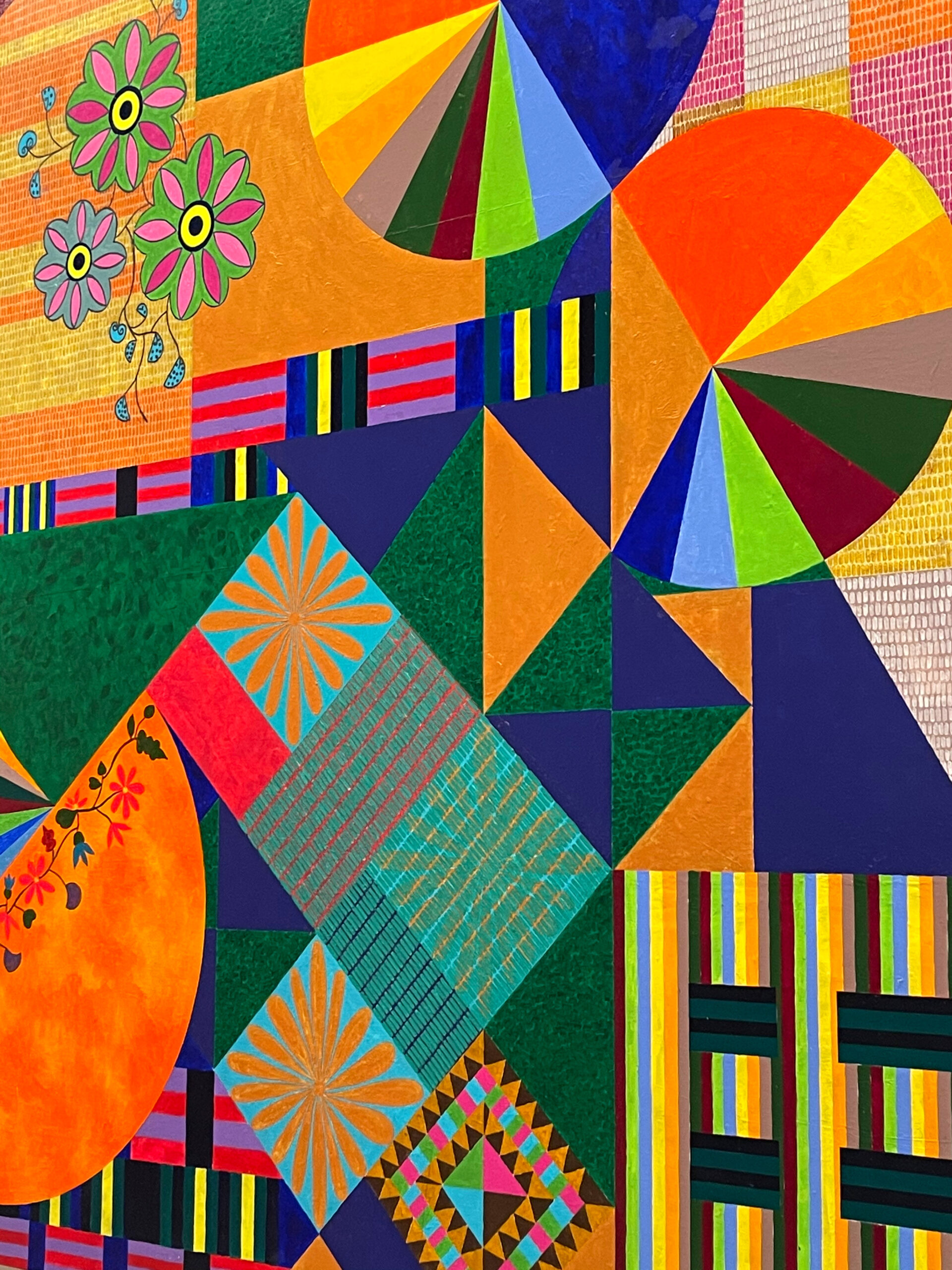
Yes! This is not a trade event for galleries or art collectors. To someone that enjoys visiting art exhibition, it’s just that; a public art exhibition only on an epic scale.And it doesn’t matter if you don’t want to spend money on a ticket. Some exhibitions are free and you could come to Venice and visit those without going to the main Biennale. If you do that though, you’ll be missing out
How much time do you need to visit Venice Biennale?

I spent two days here. I was able to visit all the main international pavilions on the main sites and see th Foreigners Everywhere exhibitions – but I wasn’t able to visit the wider exhibitions in town. You might experience peak Biennale if you try and cram too much in. The best way is to pace yourself and break up the exhibitions with breaks. I recommend anything from three days to a week.
How much is a Venice Biennale ticket?
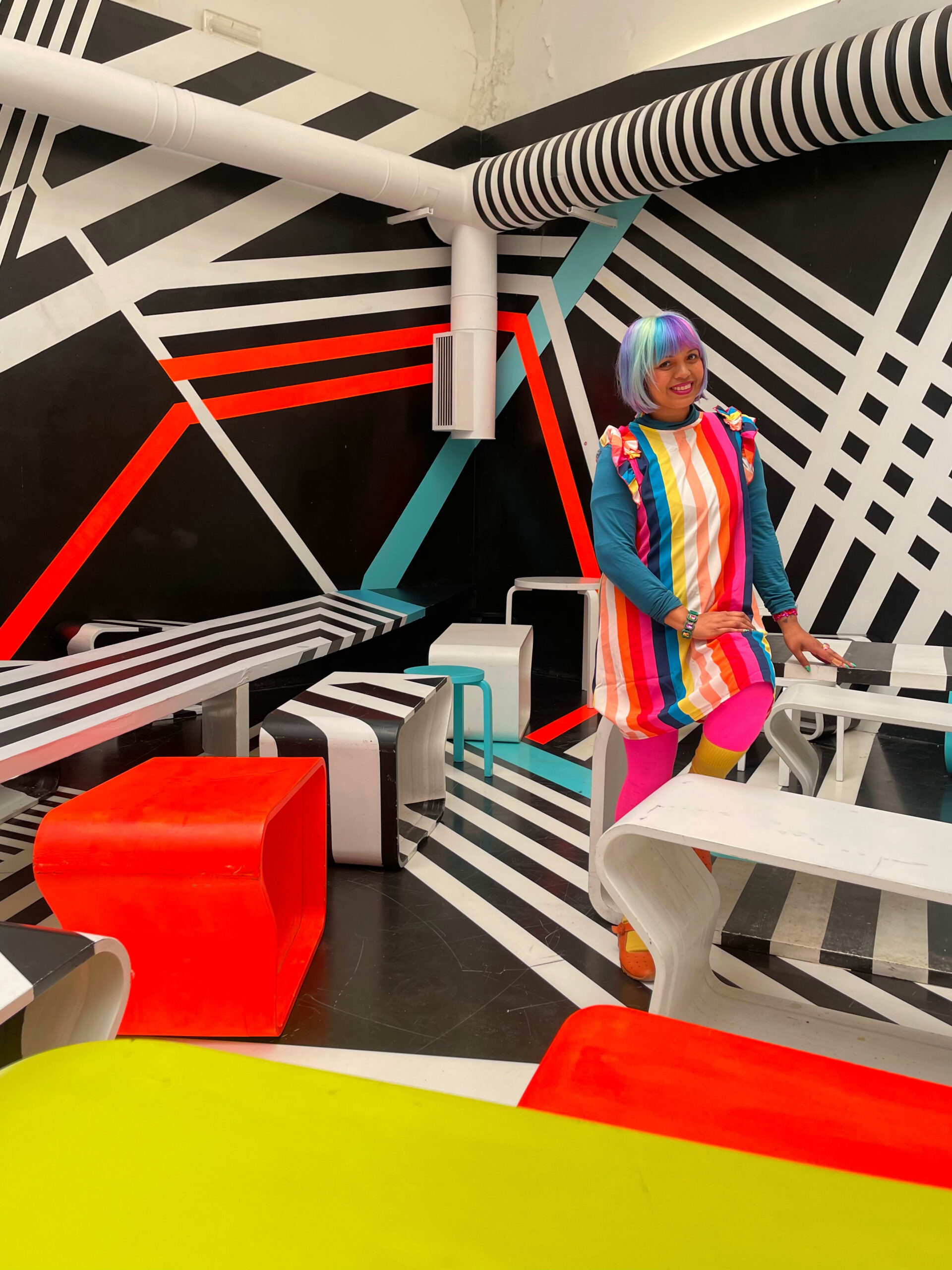
A single entry ticket is around £30 but I advise against it! It’s far too much to tackle in one day and if you step outside they won’t let you back in. So, if you want to pop to a local cafe or restaurant for a proper meal rather than the snacks on site it doesn’t work out. A much better option is to buy a ticket for more than one day. You can then pop in and out as much as you like and not get exhibition fever. I got a two day ticket for £40. I live in London where the average art exhibition £20 and that’s just one exhibition. Which is why I found the value here so good, you can see as much art as you want.
Where is Venice Biennale?
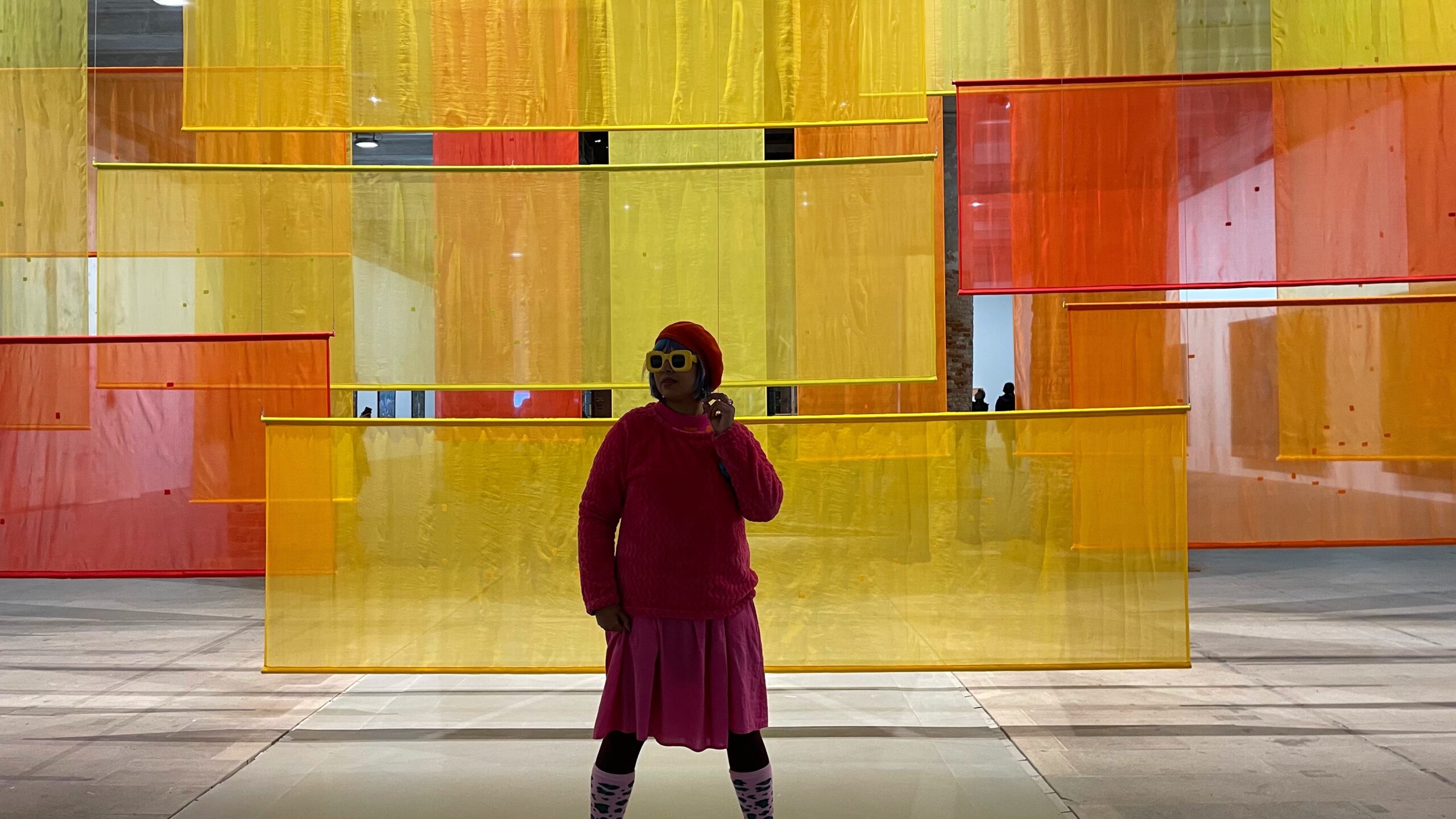
With its endless waterways, bridges and alleyways, Venice is beautiful but also confusing. The main action of Venice Biennale (the ticketed part) takes place in two specific locations every year, both are a few minutes walking distance of each other and both have their own boat stops.
Giardini
Is home to a boat stop called Biennale and there’s also a stop called Giardini. It’s where the main pavilion is, plus many of the country pavilions. These are mostly individual countries, for example, the UK has it’s own pavilion in a very impressive building split over two different floors.
Arsenale
Is where the rest of the pavilions are. These tend to be smaller and may be adjoining rooms. There’s also a second main pavilion where you’ll find more work connected to the theme Foreigners Everywhere.
There are also additional exhibitions and events spread around town. As the Biennale last eight months it’s interesting to know that the rest of the year these two parts of Venice aren’t accessed by visitors, they’re closed off.
What I spent in Venice
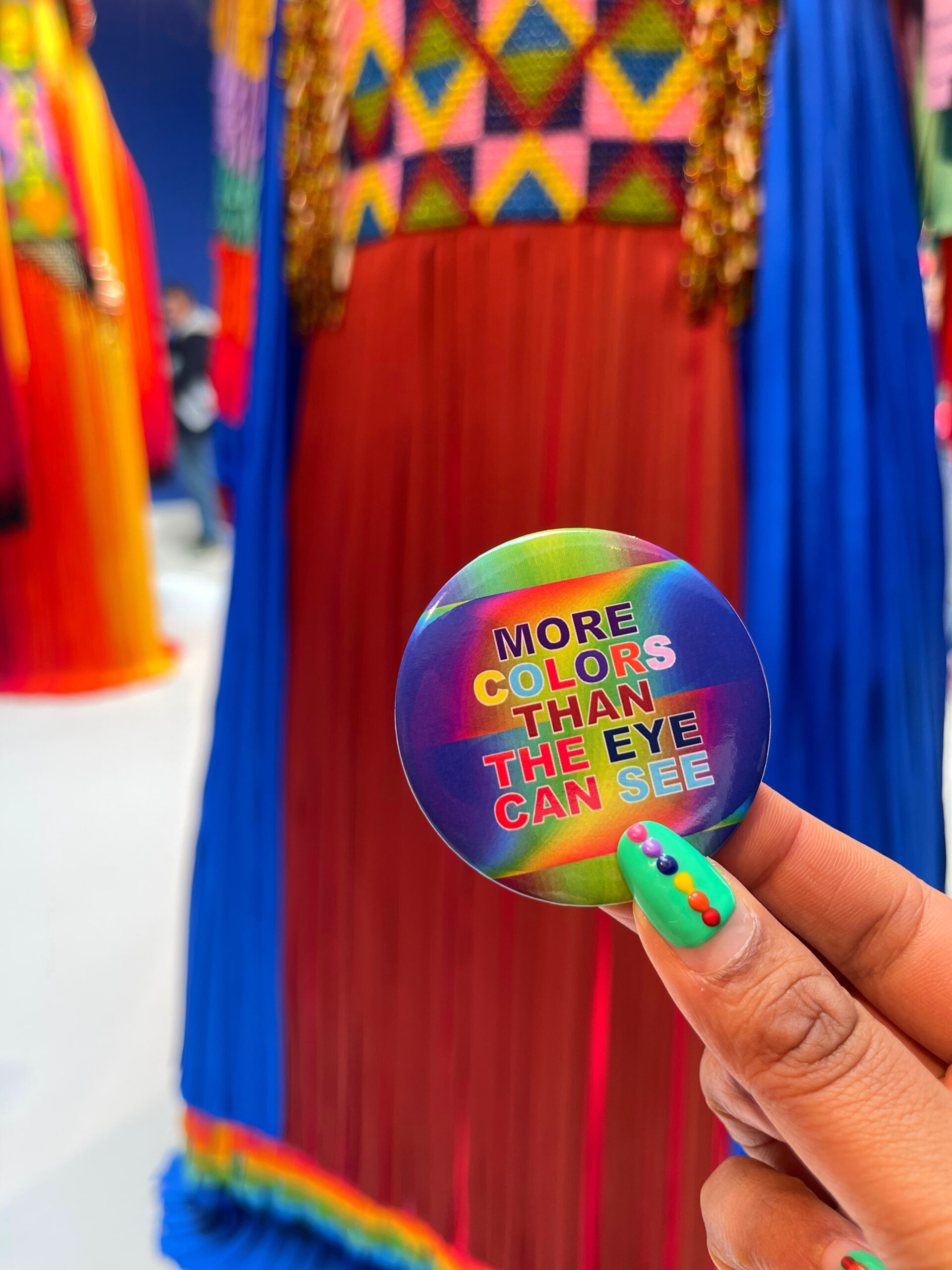
Let’s be honest, Venice is one of the most popular cities in the world and in peak season, high summer, the hotels are extremely expensive. You’d be hard-pressed to find anything less than £200 a night. The best value experience is to go after the summer rush, perhaps late September, October or November.
I went this week (April) and though spring season is quiet visitorwise, the weather was cold, wet and windy – I think September would be far more pleasant.
Here’s the break down of what I spent over 48 hours in Venice:
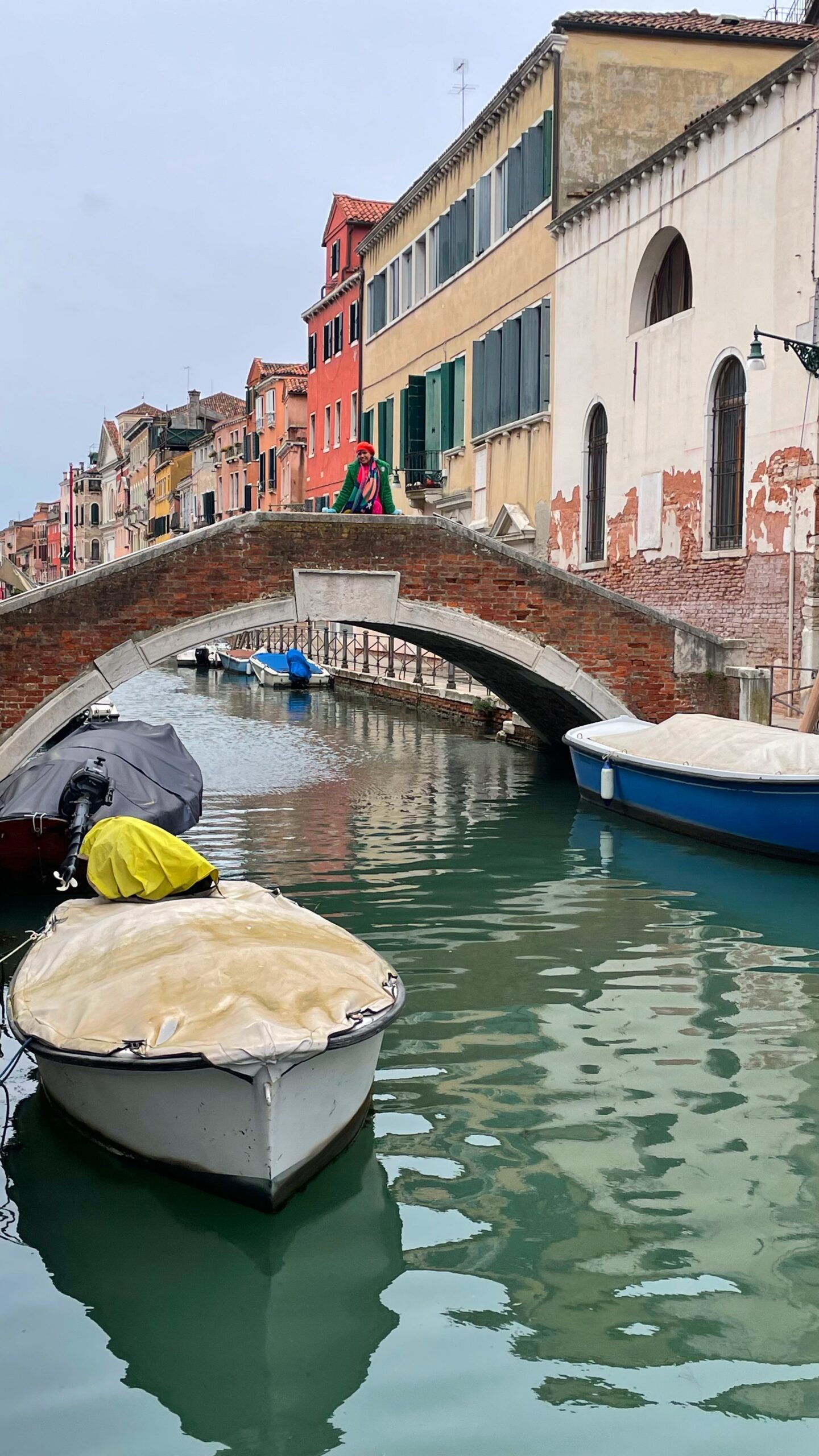
Flights: £76 return (Ryanair outbound and Wizz Air inbound – no additional luggage)
Accommodation: £20*
Travel: £35 for a 48 hour pass to access all transport including the boats and buses
Drinks and snacks: £15
Meals: Breakfast x 2, lunch x2 and dinner x1 £80
Biennale ticket: £40
Total: £266
* I stayed on the outskirts of Venice on a campsite in a trailer, probably the cheapest accommodation in Venice. It did the job though and it’s easy to jump on a bus to get into town. It’s worth knowing that regular accommodation will cost much more and may be a large chunk of your budget.
Will you be visiting the Venice Biennale 2024? If you have any questions about it, get in touch!
It runs from 20 April – 24th November 2024.

